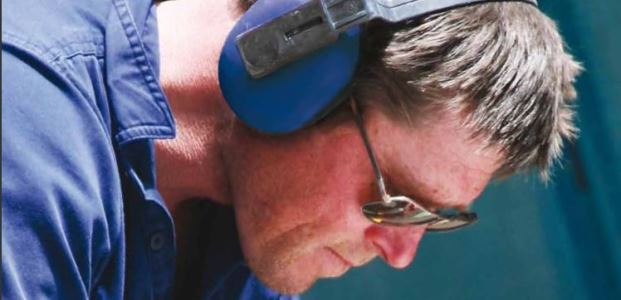
Enough Already With the Preaching!
Workers now have a choice. Plugs come in all shapes and sizes so that they are comfortable to wear, and ear muffs allow you to communicate and hear warning signals without having to pop them on and off.
- By Anthony Di Giovanni
- Sep 01, 2014
You're right, it seems like every other article on hearing protection is talking about Noise Induced Hearing Loss. And for good reason: Noise Induced Hearing Loss, or NIHL as it's commonly referred to, is a "slow injury." It creeps up on people over time, and before someone knows it, he or she has lost a significant amount of hearing and assumes this is just a normal part of getting older. It's not.
The good thing about NIHL is that it's 100 percent preventable. Wear the right hearing protection; fit it right; don't keep taking it off and on; and NIHL will likely not be a problem. Hearing protectors vary in type, shape, and technology, and much of this is due to the level of sound protection required, fit, and the need to communicate. Without preaching about why one should be wearing hearing protection, let's concentrate on finding the right ones and keeping them on.
Ear Plugs
Ear plugs come in multiple shapes, sizes, and types. It is very important that one does not skimp on ear plugs. Inexpensive, substandard plugs will likely not have the most responsive foam. They may fit well but, once in place, do not expand sufficiently to create a seal. Or the air cells in the foam may not be sufficient enough to attenuate optimally.
So what may look like and feel like any other plug may, in fact, not deliver optimal attenuation. If they are uncomfortable and non-performing, workers will take them off or hang on to some older, worn-out plugs way beyond their useable life.
The other factor is the weirdness of our ears. They are weird because each of our ears is uniquely shaped and even weirder because they are among the rare parts of our body that never stop growing. This is the main reason for having so many shapes of ear plugs. Employers need to make a few types of plugs available to fit all shapes and sizes of ear canals because no one size fits all. As for "fit," it's more about the actual fitting. Placing an ear plug into an ear canal is not so intuitive. It’s not a matter of roll and a one-shot push.
For some ears, yes, that will work, but for most it requires a proper fitting technique that only your PPE specialist can demonstrate to users with some basic training.
Ear Muffs
Over-the-ear ear muffs are a technology just keep getting better and better. In the last few years, much has been one to reduce the weight and bulkiness, and improvements in foams have made them significantly more comfortable on the ears. But perhaps the most impressive improvements have been achieved through the integration of electronics.
Unlike conventional passive muffs that attenuate based on insulating and dampening materials, electronic muffs integrate intelligent speakers that detect speech frequencies and allow it to come through for easy communication without the need to pop off an ear cup to communicate. The electronics also can detect an impulse sound blast and react in a nanosecond to increase sound protection. In addition to this, electronics can easily accommodate integration of personal mobile or communication devices.
No Need to Preach…. Well, Maybe Just a Little
With current advancements in hearing protection, there should be no need to preach because workers now have a choice. Plugs come in all shapes and sizes so that they are comfortable to wear, and ear muffs allow you to communicate and hear warning signals without having to pop them on and off.
What exposure and education in the workplace has sensitized us is to the equal dangers that exist outside of work. More and more of us are dependent on personal listening devices for music or entertainment. At the same time, we D-I-Y more and more complicated jobs on the weekend with all types of nifty and affordable tools that resemble those used at work.
We need to be aware that NIHL doesn't stop at the factory. Turning down that volume will do wonders for protecting your hearing and actually allow you to listen and play longer. Wearing hearing protection will protect you and family from unnecessary exposure, and it sets a good example for future generations.
And, who knows, the ear plugs of tomorrow may even become cool to wear as they integrate smart features, such as intelligent sound attenuation and communication.
This article originally appeared in the September 2014 issue of Occupational Health & Safety.